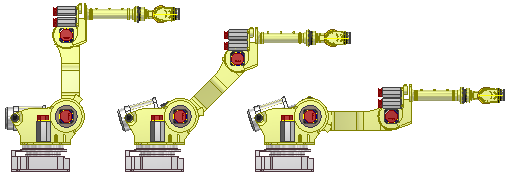An assembly file has a master Positional representation that represents the default state of the assembly. When creating a Positional representation, the master is copied.
Create a positional representation of an assembly
Use positional representations to show an assembly in different positions. For example, fully open or fully closed.

- Click the Representations tab on the Browser.
- In the browser, click to expand the Representations folder.
- Right-click Position, and select New. The new Positional representation is activated and nested below the master, using the default name Position1.
- Select Positional representation in the browser and enter a new name.
- Establish overrides to relationships and components.
- Save.
Edit or copy a Positional representation
Save time by copying a Positional representation and adjust as needed: In the browser, select the Representations folder to expand. Right-click the Positional representation and select Copy. The copied representation is placed in the browser at the same level as the master representation.
- To edit, right-click the Positional representation in the Representation browser and select Activate.
- Select a component or relationship for which an override needs to be edited or created, right-click, and select Override.
- (Optional) If desired, click Verify to recompute all positional representations to make sure they are all valid. For example, editing in the master representation may change positions or other data in a positional representation.
- Save.
Tip: If you create a complex Positional representation, manipulate values using the Microsoft Excel spreadsheet instead of context menu options. See
Manage assembly Positional representations in a spreadsheet.
To override relationships, pattern offsets, component placement, or representations, see Override values in Positional representations.
Note: Save Multiple Positional representations to an assembly file. To change to a different Positional representation, in the browser, right-click the positional view and select Activate. The active Positional representation has a check mark beside its name in the browser.